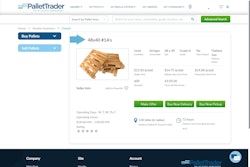
The holiday season may conjure up visions of sugarplums and soaring sales, but for manufacturers and suppliers, it is more often a test of operational endurance. Peak season—typically spanning from October through December—can strain even the most robust supply chains through heightened customer demands, tight labor markets, port congestion, increased carrier rates, and tight delivery deadlines.
For legal and operational leaders alike, the key to surviving (and thriving) during this high-stakes period lies in advance preparation: proactive planning, contract hygiene, data visibility, and technology utilization. Here is a legal and strategic roadmap for how to prepare, including a checklist of key risk areas to navigate before the pressure cooker of peak season hits full boil.
Peak season planning: What manufacturers are doing right now
The best-prepared manufacturers do not just respond to the holiday rush, they anticipate it.
Forecasting demand with AI and predictive analytics. Top-performing companies are moving beyond spreadsheets and gut feel. Manufacturers are integrating AI-powered tools to refine forecasts based on real-time market data, weather events, geopolitical developments, and historical trends. These tools help allocate resources, predict regional spikes in demand, and trigger automatic adjustments in production schedules and transportation capacity.
For example, one global electronics supplier partnered with a predictive analytics platform that integrates retail sell-through data from major retailers. That visibility enabled them to pre-stage inventory at third-party logistics (3PL) hubs located within one-day delivery zones of key customer markets, cutting late shipments by 38% in Q4 2024.
Leveraging dynamic transportation strategies. Manufacturers are diversifying carrier portfolios and locking in dedicated freight capacity well ahead of peak season. Many are using transportation management systems (TMS) with AI routing and mode optimization to dynamically switch between full truckload, less-than-truckload (LTL), and parcel services based on congestion levels and price trends.
Retailer and supplier readiness audits. Retailers have strict “must arrive by” deadlines (MABD) during peak season, and many issue financial penalties for noncompliance. Smart suppliers are conducting mock runs, labeling audits, and ASN testing with retailer portals to ensure they are not leaving compliance (or dollars) on the table.
The peak season legal readiness checklist
It is not just logistics that need a stress test—contracts and legal frameworks must be peak-season ready too. Here is a checklist manufacturers and suppliers should review as the holidays approach:
þ Review Force Majeure and allocation clauses
Ensure your contracts include updated force majeure provisions and commercially reasonable allocation rights under UCC § 2-615 or equivalent provisions in international agreements. In the event of labor shortages or transportation bottlenecks, these clauses can help lawfully prioritize key customers.
Pro tip: A Tier 1 supplier to an appliance OEM recently invoked its allocation rights during a port closure, supported by documentation of its force majeure notification and fair allocation criteria.
þ Plan for international operations
Cross-border logistics become more complex during peak season, with risks including dynamic tariffs and value-added tax (VAT) shifts. Also, localized “holiday bans” on trucking such as Golden Week in China or Christmas port closures in Europe. Ensuring contracts include jurisdiction-specific trade compliance and disruption clauses can help mitigate these risks.
þ Confirm surcharge and tariff pass-through clauses
Peak season often coincides with shipping surcharges and there appears to be no end in sight to the dynamic tariffs. Confirm whether your contracts allow you to pass through fuel surcharges, import duties, or expedite fees. If not, now is the time to amend or issue surcharge letters for Q4.
þ Lock in performance benchmarks and late delivery grace periods
Holiday orders are time sensitive. Suppliers should clarify whether “time is of the essence” and negotiate reasonable grace periods before liquidated damages or chargebacks apply. Be sure to align legal terms with operational realities (e.g., buffer zones for warehouse cutoffs).
þ Update warranties and returns language
High volumes often trigger higher return rates. Make sure your warranty terms are clearly communicated, especially for consumer-facing goods. Ensure that returns policies (especially reverse logistics terms) are synchronized across distribution and retail partners.
þ Clarify inventory ownership and title transfer timing
If inventory is staged at 3PL hubs or consigned to customer facilities, confirm in writing when title and risk of loss transfer. In one recent case, a supplier faced liability for storm-damaged goods held in a customer’s warehouse because the contract was silent on when title transferred.
þ Address labor shortage and temporary worker issues
Be prepared for labor constraints at warehouses and production lines. Ensure staffing agencies provide indemnity clauses for compliance with wage, hour, and occupational safety rules. Include insurance certificate requirements and right-to-audit clauses.
þ Account for cyber risks
With the digitization of supply chains, cyberattacks on TMS and warehouse systems are increasingly common during peak season. Ensure that contracts with vendors include cybersecurity clauses, such as data protection standards, breach notification obligations, and requirements for data backups and disaster recovery plans.
Technology tools for peak season success
Legal protection is essential. But operational enablement matters just as much. Manufacturers should consider integrating these tools before the holiday crunch hits:
AI-enabled demand forecasting: Systems that ingest POS data, economic indicators, and inventory levels to create real-time demand projections.
Control tower visibility platforms: Real-time dashboards that integrate with planning, transportation management, and warehouse management systems to provide end-to-end supply chain visibility.
Automated contract management systems: Platforms that surface key legal obligations, flag compliance risks, and auto-generate key notices (like force majeure or allocation letters).
Retailer compliance scorecards: Dashboards that track on-time delivery performance and chargebacks across retailers, helping suppliers stay ahead of penalties.
Stay legally and logistically ready
Peak season does not reward improvisation—it rewards preparation. In-house legal and operations teams should work together now to eliminate surprises later. Here are five takeaways to keep in mind:
Act early: Secure freight capacity, negotiate pricing protections, and validate compliance processes before the October surge.
Align contracts with reality: Double-check that your agreements reflect how your supply chain really operates—from lead times to responsibility for freight expedites to title transfer to surcharge pass-throughs.
Leverage AI, but vet your data: Smart forecasting tools only work if you have clean, accurate data inputs. AI is a force multiplier, not a cure-all.
Plan for disruption: Assume labor shortages, transportation delays, and retailer rigidity. Use contractual and operational levers to maintain flexibility and mitigate risk.
Cross-train legal and ops teams: The best organizations do not silo their legal and logistics functions. Collaborate now to ensure both sides of the house understand peak season playbooks.
Prepare to avoid panic
As holiday demand accelerates, so do the risks for manufacturers. By combining proactive planning, AI-enabled visibility, and legally sound contract strategies, supply chain leaders can ensure they are not just reacting to peak season, but also commanding it. As always, preparation is the best antidote to panic.

















